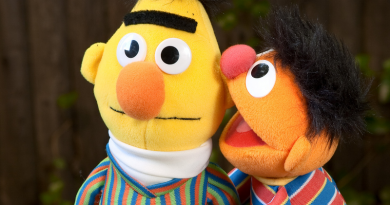What is intersectionality?
What is intersectionality, and how does it relate to someone’s gender and sexuality?
Intersectionality is a word that’s coming up more and more now. It’s actually pretty old! Kimberlé Crenshaw, an activist and scholar, came up with the term years ago in 1989, to better understand how sexism and racism are linked, and the oppression that Black women experience.
So what does intersectionality have to do with someone’s gender or sexuality?
Intersectionality reflects how different parts of people’s identities (like race, ethnicity, gender, class, sexual orientation, religion, ability/disability, age, and more) do not and cannot exist separately. When we’re talking about LGBTQ+ issues, this is so important. For example, the LGBTQ+ movement often over-represents white people and focuses around white people’s experiences as queer people. We have to remember that queerness exists in all contexts, all over the world. Everyone experiences queerness differently and no one person’s experience is the same. We need to see this more!
When we see just one representation of LGBTQ+ identities, it erases the diversity within this community. If you are queer and a person of colour, you have to battle racism on one hand and homophobia on the other. This is not an issue white people experience, and it’s vital that white people within the LGBTQ+ community recognise this.
This is why intersectionality is important. Intersectionality helps us understand the different intersecting systems of privilege and oppression that exist.
Let’s unpack these two terms: privilege and oppression
Privilege means you benefit from a system that doesn’t oppress you because of your skin colour, your gender, your sexuality, your class position, etc. So, a heterosexual (straight), cisgender, white man benefits more from this system, compared to a lesbian, cisgender, white woman. But she, in turn, benefits more compared to a transgender, Black woman. Those examples are fairly simplistic, and it’s often not so easy to say someone outright ‘benefits more’ than someone else. Instead, most of us benefit in some ways and don’t in others.
By ‘benefits more’, we mean that someone is represented and seen across TV, films, and media, that their experience is assumed to be the ‘norm’, and basically that society is built with them in mind. For example, the average size of a smartphone is 5.5 inches long, which is too big for most women’s hands. This may sound tiny, but all these things build up to mean functioning in society is harder because someone’s female, or a person of colour, or queer, or disabled.
Oppression is the opposite of privilege. It means that someone is unfairly targeted because of their skin colour, or gender, or sexuality, or class position, etc. So, a queer, trans woman of colour will face many more obstacles within these systems of privilege and oppression.
Intersectionality allows us to see the connections between fights. LGBTQ+ issues, the Black Lives Matter movement and feminist activism don’t exist separately from each other. If you’re a queer, black woman, you don’t identify with one of these human rights issues. You identify with all three.
Intersectionality and checking your privilege is about recognising the connections between human rights issues, and making society a less oppressive place for everyone. Understanding intersectionality is a great place to start. This is why intersectionality matters.
Other support
- What to watch this LGBTQ+ History Month
- The Mix – What does privilege mean?
- The Trevor Project – Black and LGBTQ+: Approaching intersectional conversations
- Brook – Find LGBTQ+ support near you
Read more
Last Reviewed 20 April 2023
Image Credit: Jon Tyson via Unsplash





